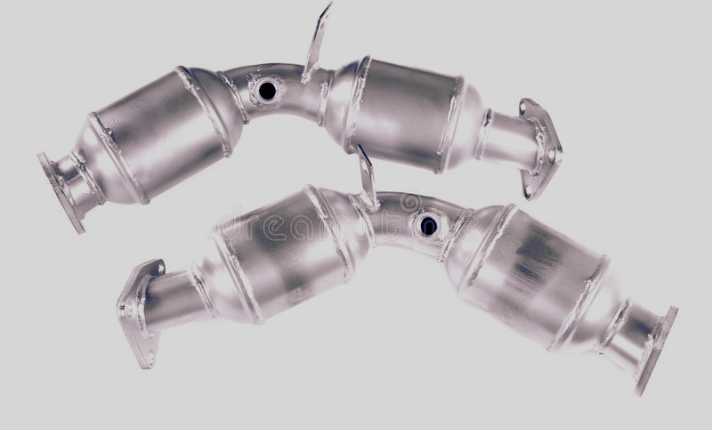Catalytic converters play a crucial role in reducing harmful emissions from vehicles, making them an essential component of modern automotive technology. In this blog, we will explore the functionality of catalytic converters, their evolution in the automotive industry, their presence in different vehicle types, the regulatory requirements surrounding them, and any exceptions or alternatives that exist. By understanding the significance of catalytic converters, drivers can contribute to a cleaner and healthier environment.
I. Understanding Catalytic Converters
A. Definition and Functionality:
Catalytic converters are emission control devices designed to reduce the amount of harmful pollutants released into the atmosphere by vehicles. They contain catalysts that facilitate chemical reactions, converting toxic gasses such as carbon monoxide (CO), nitrogen oxides (NOx), and hydrocarbons (HC) into less harmful substances like carbon dioxide (CO2), nitrogen (N2), and water vapor (H2O).
B. Components and Structure:
Catalytic converters are typically composed of a ceramic or metallic substrate coated with precious metals such as platinum, palladium, and rhodium. The substrate provides a large surface area for the catalysts to interact with exhaust gases. The structure includes an inlet pipe, the substrate, a catalytic converter core, and an outlet pipe. This arrangement ensures efficient contact between exhaust gases and the catalysts, enabling effective emission reduction.
II. Evolution of Catalytic Converters in the Automotive Industry
A. Historical Overview:
The adoption of catalytic converters in vehicles gained momentum in the 1970s due to increasing concerns about air pollution and stricter emission regulations. The Clean Air Act of 1970 in the United States played a pivotal role in pushing for the widespread implementation of catalytic converters. As a result, automotive manufacturers began equipping their vehicles with catalytic converters to comply with emissions standards.
B. Advances and Technological Improvements:
Over the years, significant advancements have been made in catalytic converter technology. Manufacturers have developed more efficient catalyst formulations, allowing for better conversion rates and longer lifespans. Additionally, innovations in substrate design, such as the introduction of honeycomb structures, have increased the surface area available for catalytic reactions. These improvements have led to reduced emissions and improved overall performance.
III. Catalytic Converters and Vehicle Types
A. Gasoline-Powered Cars:
Catalytic converters are a standard feature in modern gasoline-powered vehicles. They are integrated into the exhaust system after the engine and before the muffler. Gasoline engines produce high levels of carbon monoxide, nitrogen oxides, and hydrocarbons, which catalytic converters help convert into less harmful substances. This integration allows gasoline cars to meet stringent emission regulations.
B. Diesel-Powered Vehicles:
Unlike gasoline cars, not all diesel-powered vehicles are equipped with catalytic converters. The reason lies in the nature of diesel combustion, which produces higher levels of nitrogen oxides and particulate matter. Diesel vehicles often employ other emission control technologies, such as diesel particulate filters (DPFs) and selective catalytic reduction (SCR) systems, to address these pollutants. However, some diesel vehicles may still have catalytic converters to aid in reducing carbon monoxide and hydrocarbon emissions.
IV. Regulatory Requirements and Emission Standards
A. Government Regulations:
Governments worldwide have established stringent emission standards to combat air pollution and protect public health. These regulations set limits on the maximum allowable emissions for specific pollutants, such as carbon monoxide, nitrogen oxides, and hydrocarbons. Catalytic converters are instrumental in helping vehicles meet these emission standards, and their presence is often mandated by law.
B. Compliance and Testing:
To ensure compliance with emission standards, vehicles are subjected to emissions testing. This testing may involve measuring the pollutant levels emitted by the vehicle under various operating conditions. Catalytic converters play a vital role in helping vehicles pass these tests by effectively reducing emissions. Failure to meet the required standards can result in penalties, vehicle impoundment, or the inability to register the vehicle.
V. Exceptions and Alternatives
A. Catalytic Converter Elimination:
In some cases, individuals may consider removing or bypassing their catalytic converters. This practice, commonly known as “cat delete,” is often driven by misconceptions or misguided attempts to enhance engine performance. However, removing catalytic converters is not only environmentally irresponsible but also illegal in many jurisdictions. It can lead to increased emissions, air pollution, and potential damage to the engine.
B. Emerging Technologies and Alternatives:
While catalytic converters have been instrumental in reducing vehicle emissions, ongoing research and development are exploring alternative solutions. Electric vehicles (EVs), for example, produce zero tailpipe emissions, making them a promising alternative to traditional internal combustion engine vehicles. Additionally, advancements in hydrogen fuel cell technology and hybrid vehicles are paving the way for cleaner transportation options.
Conclusion:
Catalytic converters are a critical component of emission control systems in vehicles, playing a crucial role in reducing harmful pollutants and meeting strict environmental regulations. While the majority of gasoline-powered vehicles are equipped with catalytic converters, not all diesel-powered vehicles require them due to different emission characteristics. Understanding the presence and function of catalytic converters helps drivers comprehend their role in promoting cleaner air and a healthier environment.
As governments continue to enforce emission standards and implement stricter regulations, catalytic converters will remain an essential aspect of automotive technology. It is crucial for vehicle owners to comply with emission regulations, undergo regular inspections and maintenance, and replace faulty catalytic converters promptly to ensure optimal performance and minimal environmental impact.


